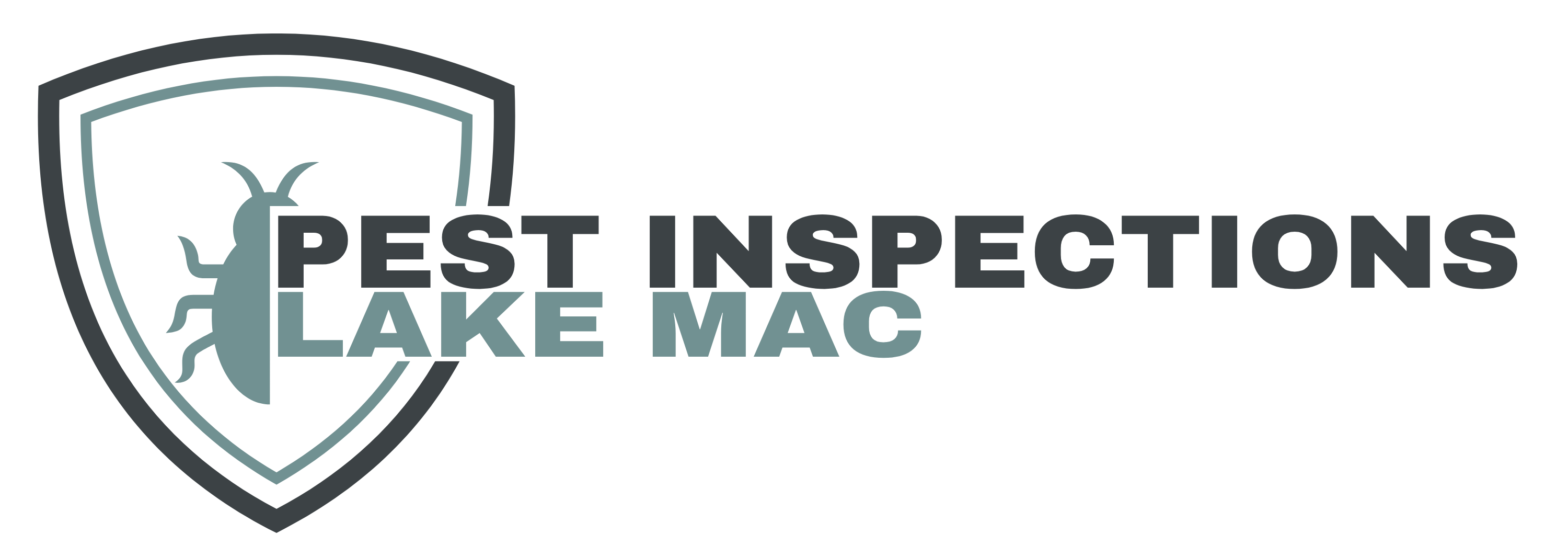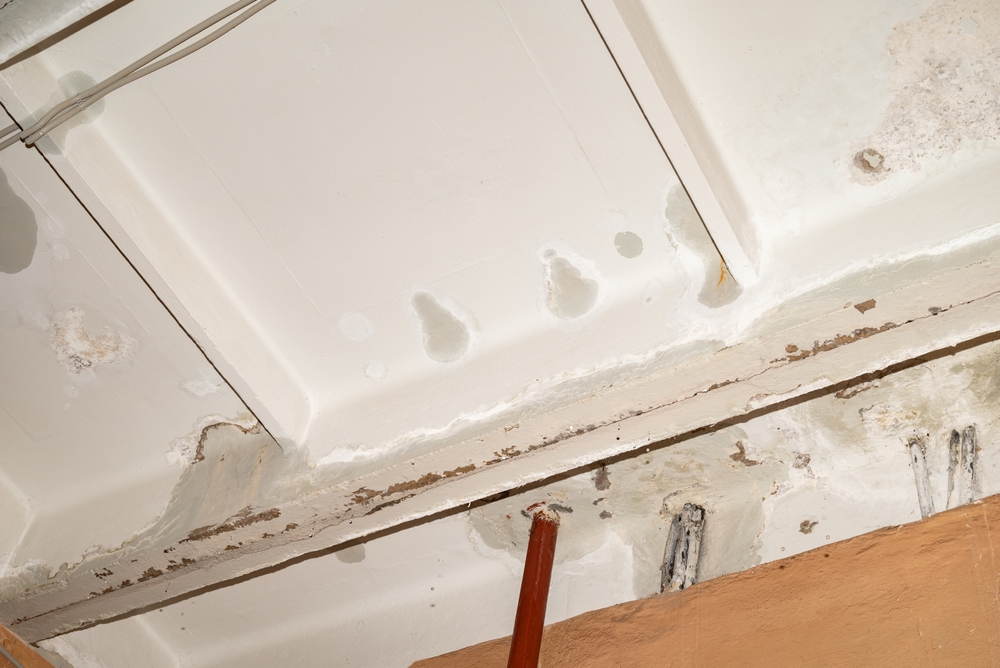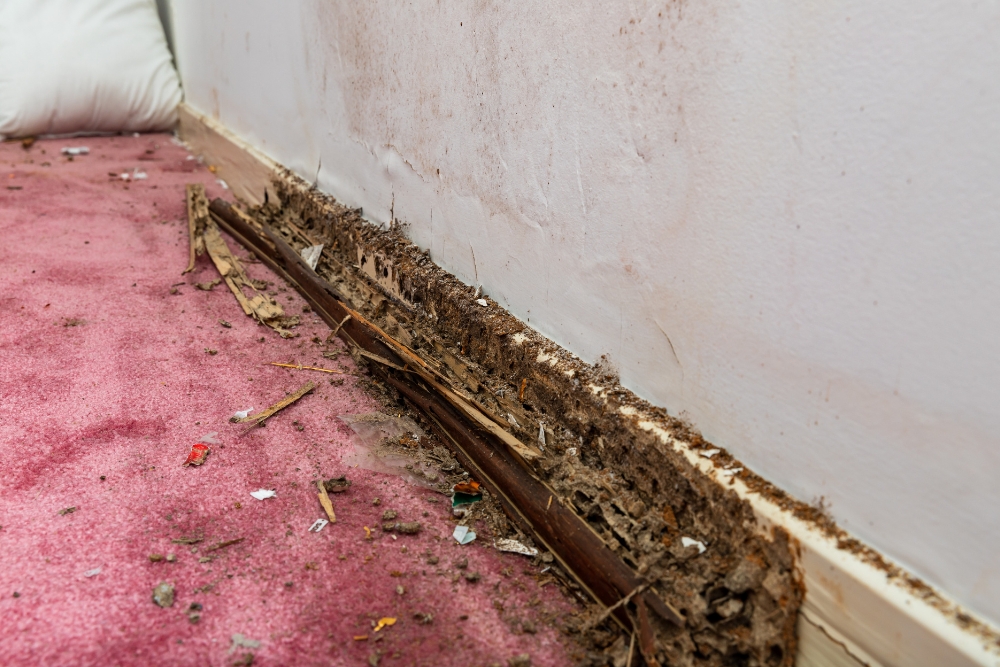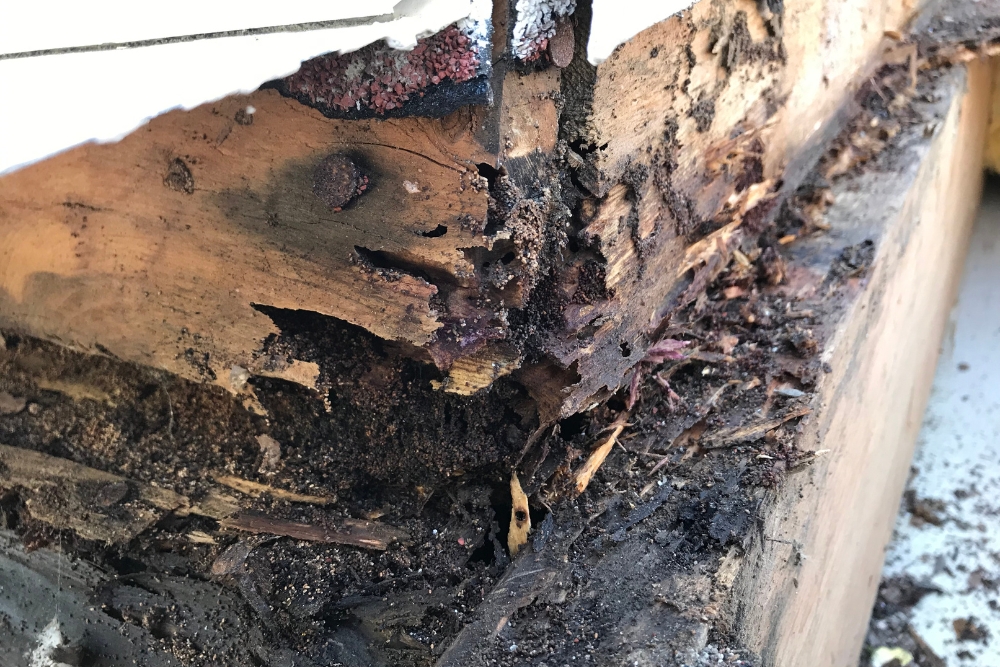Moisture in our homes can be a bigger problem than we often realise, leading to unwanted pests and damage. This trouble starts when excess moisture attracts creatures like termites, putting our living spaces at risk.
Keeping our homes dry demands fixing leaks pronto and using tools like dehumidifiers. Cracks and gaps in the structure need sealing to block invaders’ entryways. It’s also vital that we clean our gutters often and maintain proper drainage to stop water from pooling around our properties.
A tidy yard with trimmed bushes and no debris plays its part in decreasing habitats pests love. Moreover, making a habit of cleaning regularly controls moisture inside and keeps the pests away.
Our exploration dives into why managing moisture is key not just for comfort but for keeping those uninvited guests out of our homes.
Key Takeaways
- Fix leaks and use dehumidifiers to keep your home dry, since damp areas invite pests like termites.
- Seal up any cracks and gaps in your house to stop pests from getting inside.
- Clean gutters regularly and ensure proper drainage around your home to prevent moisture buildup.
- Keep your yard tidy by trimming bushes and removing debris, which can reduce pest-friendly environments.
- Regularly cleaning your home helps control moisture levels and discourages pests from settling in.
The Impact of Moisture on Pest Infestations
The presence of moisture within a home or garden does far more than just dampen surfaces; it actively invites pest infestations, setting the stage for an ecosystem that pests find irresistible. By offering a steady water source, damp areas become hotspots for a variety of pests, including insects like roaches and termites, as well as rodents, all of which prioritise access to water for their survival.
These conditions are also ideal for the proliferation of mould, mildew, and rot, further degrading the integrity of a structure and creating additional nesting opportunities for pests. As these organisms take hold, they can exacerbate the moisture problem, creating a feedback loop that encourages more pests to move in.
Understanding this dynamic is crucial for homeowners, as effectively managing moisture can significantly reduce the likelihood of pest infestations, protecting both the health of the living environment and the stability of the structure itself.
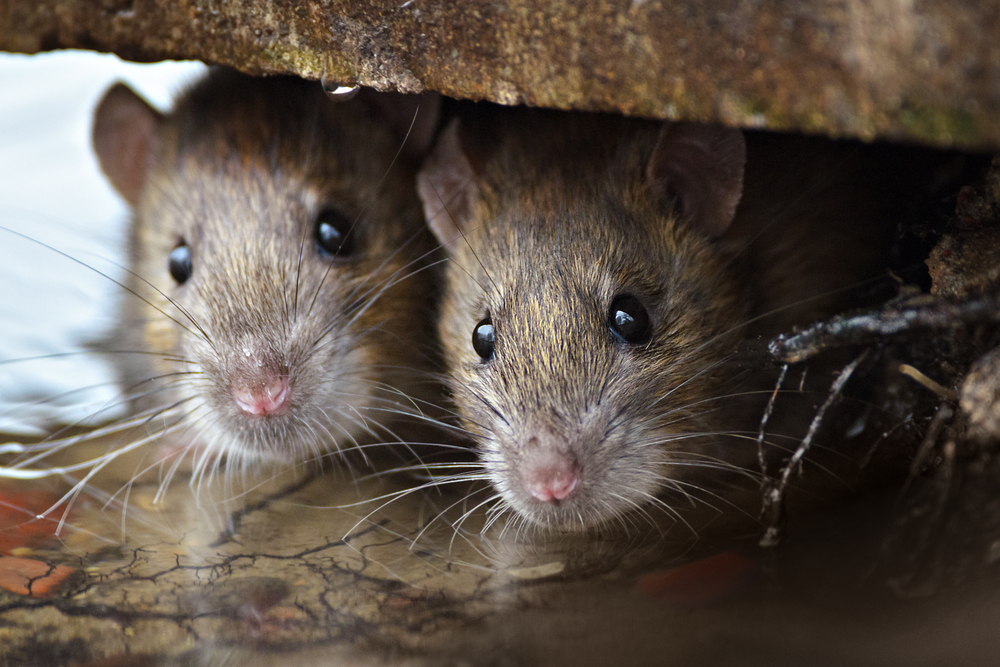
Common mistakes that create moisture
We all want our homes to be dry and free from pests. To achieve this, understanding the common mistakes that create moisture is crucial since damp conditions attract various pests.
- Poor ventilation in wet areas creates a perfect environment for moisture build-up. Ensuring good air circulation in bathrooms, kitchens, and laundry rooms helps prevent dampness.
- Leaking pipes go unnoticed too often, increasing humidity levels within walls and under floors which attract pests like termites.
- Overwatering plants near the foundation of the house results in excess moisture seeping into the basement or crawl spaces, a prime condition for pest infestation.
- Ignoring proper drainage around your home can lead to standing water which not only damages the structure but also invites pests looking for breeding grounds.
- Failing to use a dehumidifier in naturally damp spaces such as basements can keep humidity levels high, making these areas attractive to pests.
- Not cleaning gutters regularly causes water to overflow and collect near your home’s foundations, contributing to a moist environment where pests thrive.
By tackling these issues, we can significantly reduce moisture around our homes and deter pests from taking up residence. Now let’s explore how pests are attracted to moisture and why managing it effectively is key to keeping them at bay.
How pests are attracted to moisture
Pests are drawn to moisture as it provides them with the ideal environment for breeding and survival. Damp areas create a welcoming habitat for pests like cockroaches, ants, and mosquitoes.
In addition to this, standing water attracts termites and other wood-destroying insects. Moisture not only supports insect life but also contributes to mould growth, which can further attract pests and affect indoor air quality.
High humidity levels from moisture-laden environments create an attractive space for pests such as silverfish and centipedes. The combination of warmth and moisture in your home provides the perfect conditions for many household pests to thrive.
Strategies for Reducing Moisture in Your Home
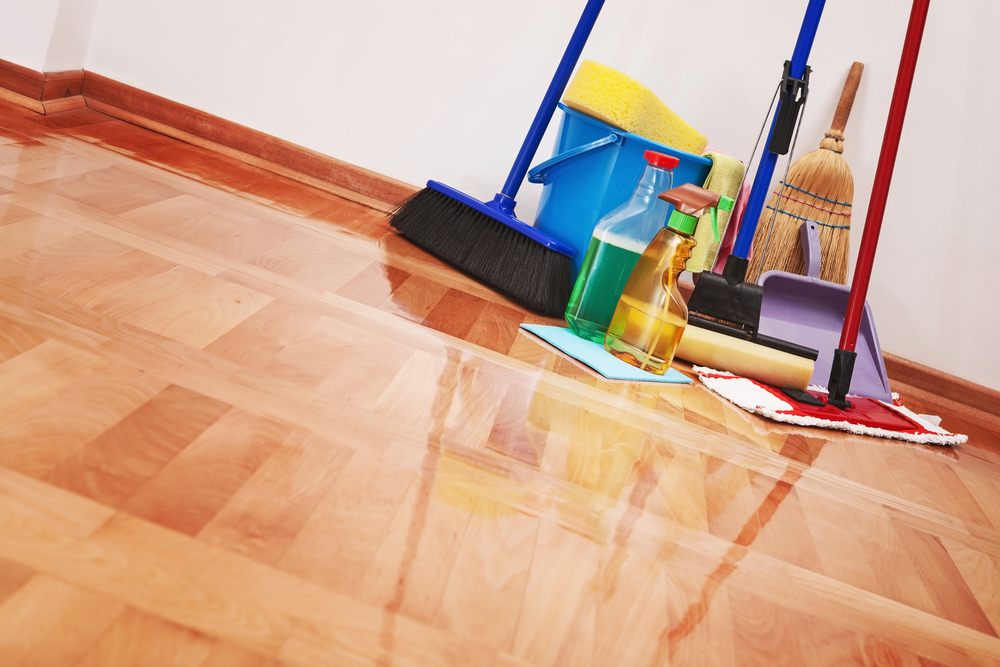
Reducing moisture in your home is a multifaceted endeavour that requires a proactive approach to seal up potential entry points where moisture can infiltrate, such as cracks around windows, doors, and foundation walls.
Managing indoor moisture levels can also be significantly improved by utilising dehumidifiers in particularly damp areas and ensuring proper ventilation in rooms like kitchens and bathrooms where moisture tends to accumulate. Keeping your home clean and free from clutter eliminates potential hiding spots for pests and reduces areas where moisture can be trapped.
Regular maintenance of your yard and surrounding areas is equally important; overgrown vegetation and debris can harbour dampness and provide a conducive environment for pests seeking a new home. By implementing these strategies, you effectively lower the risk of pest infestations while maintaining a healthier and more comfortable living environment.
Sealing up entry points
Sealing up entry points is crucial for preventing pests from invading your home. It involves:
- Inspecting and sealing any gaps or cracks in walls, windows, and doors to prevent pest entry.
- Installing door sweeps and screens on windows to keep pests outside.
- Ensuring that utility entry points are properly sealed to prevent pest access.
- Using caulk or weather stripping to seal openings around pipes, cables, and wires.
- Repairing damaged vents and ensuring they have proper covers to keep pests out.
By actively sealing entry points, you can effectively prevent pests from infiltrating your home and maintain a dry and pest-free living space.
Managing moisture levels
Moisture management is a crucial aspect of maintaining a dry and pest-free home. We must take proactive steps to manage moisture levels to keep our living space protected and comfortable. Here are some effective strategies to help you achieve this:
- Install and use exhaust fans in kitchens and bathrooms to reduce humidity.
- Fix any leaking pipes, faucets, or roofs promptly to prevent water accumulation.
- Use a dehumidifier in areas prone to moisture buildup, such as basements or crawl spaces.
- Ensure proper ventilation in attics by installing vents or fans to reduce condensation.
- Regularly inspect and maintain your HVAC system to prevent moisture issues within your home.
By managing moisture levels effectively, we can create an environment that is unwelcoming to pests while promoting the longevity of our homes.
Keeping your home clean
Regular cleaning is pivotal for maintaining a dry and pest-free home. Vacuuming carpets, sweeping floors, wiping down surfaces, and taking out the trash can help eliminate food particles that attract pests.
It’s also important to regularly clean kitchen appliances and dispose of expired food items to prevent them from becoming breeding grounds for insects or mould. Keeping bathrooms clean and dry can also reduce moisture levels in your home.
Additionally, ensuring outdoor areas are free from clutter such as leaf litter can deter pests from congregating near your home’s entry points.
Regular maintenance of yard and surroundings
Maintaining a well-kept garden and surroundings is crucial. It not only enhances the overall appearance of your home but also plays a significant role in preventing moisture accumulation and pest infestations. Here are some strategic maintenance steps for keeping your garden and surroundings pest-free:
- Trim overgrown bushes and trees to reduce moisture-harbouring areas.
- Keep gutters clean to prevent water from pooling near the foundation.
- Repair any leaks or standing water sources, such as outdoor taps or irrigation systems.
- Remove debris and organic matter from the garden regularly to minimise pest habitats.
- Ensure proper drainage by grading the land away from the foundation to avoid water accumulation.
By diligently maintaining your garden and surroundings, you can significantly reduce moisture levels and create an environment that is less conducive to pests.
Importance of Moisture Control in Termite Prevention
Controlling moisture within and around your home plays a pivotal role in the prevention of termite infestations, particularly in Australia, where the climate can be conducive to the proliferation of these destructive pests.
Termites are attracted to moist environments as these conditions provide the perfect habitat for them to thrive and reproduce. By ensuring that your property is well-ventilated and that areas prone to dampness, such as crawl spaces and basements, are kept dry, you significantly reduce the appeal of your home to these invaders.
Implementing proper drainage systems to direct water away from the foundation and regularly inspecting for leaks in plumbing can further mitigate the risk of creating moist conditions that termites favour. Hence, managing moisture levels not only contributes to a healthier living environment but is a critical component in safeguarding your home against the considerable threat posed by termites in Australia.
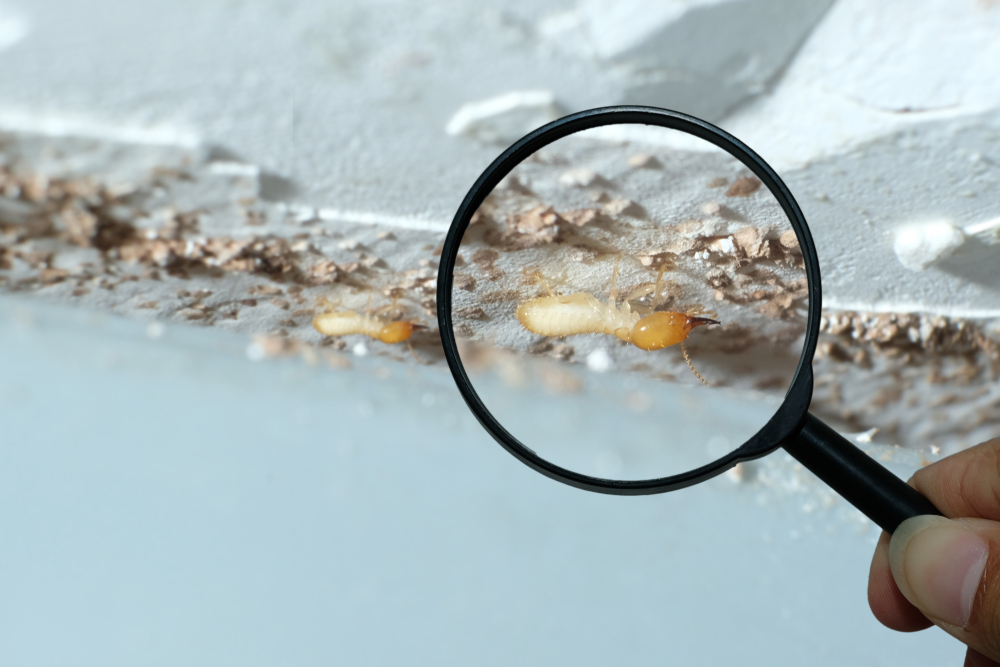
Relationship between moisture and termites
Excess moisture in your home can attract termites, as they thrive in damp environments. As the wood becomes moist, it softens and becomes more susceptible to termite infestations. Termites are drawn to these areas due to moisture making them ideal for nesting and feeding.
It’s imperative to manage moisture levels effectively to prevent termite activity in your home.
Understanding the connection between moisture and termites is crucial for effective pest prevention strategies. By controlling moisture, you can create a less hospitable environment for termites, reducing the risk of infestation.
Tips for identifying and addressing moisture issues
- Inspect all areas of your home for leaks, including plumbing, roof, and windows.
- Use a dehumidifier to control indoor humidity levels and prevent moisture build-up.
- Ensure proper ventilation in the kitchen, bathroom, and laundry room to reduce condensation.
- Repair any damaged or missing caulking around doors, windows, and other openings to prevent water intrusion.
- Clean gutters and downspouts regularly to ensure proper drainage away from the foundation of your home.
- Consider installing a vapour barrier in crawl spaces and basements to prevent moisture from seeping into your home.
- Keep an eye out for signs of mould or mildew and address any issues promptly to prevent further moisture problems.
Professional Pest Control Services for Keeping Your Home Dry and Pest-Free
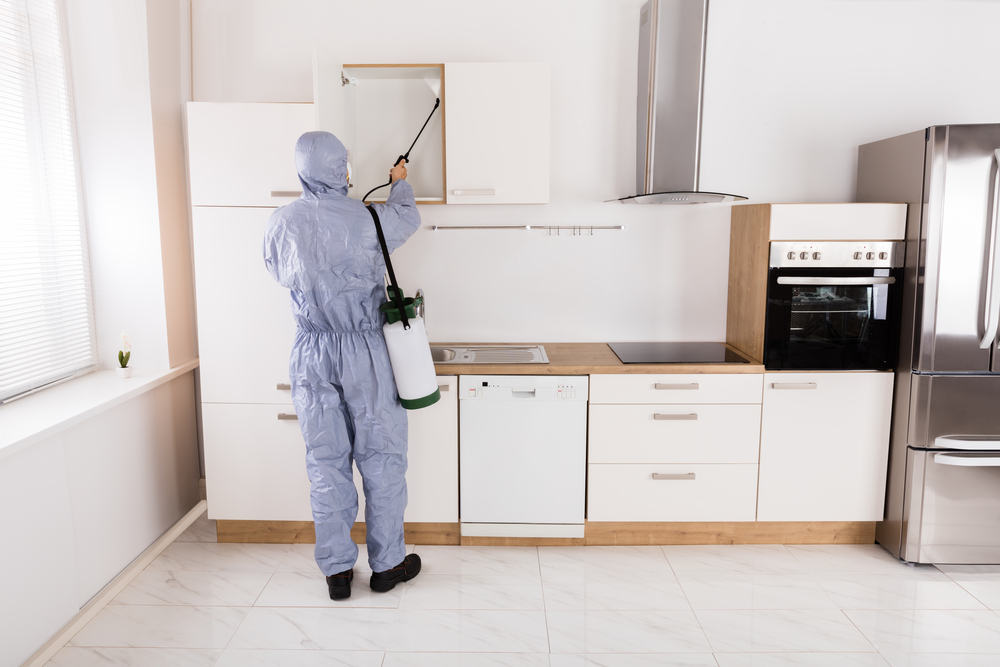
Professional pest control services offer tailored strategies to keep your home dry and pest-free. Our team applies effective pest management techniques, including targeted treatments and proactive prevention plans.
Homeowners benefit from expert advice on moisture reduction, waterproofing solutions, and ongoing support in maintaining a pest-proof environment. Building inspectors trust our meticulous approach to identifying vulnerabilities and providing comprehensive protection for residential properties.
Pest inspectors rely on our proactive methods for preventing infestations and addressing any existing issues promptly.
Our professional expertise in moisture management and pest control ensures that Australian homeowners have access to reliable protection against potential risks. With our help, you can safeguard your property with confidence while enjoying peace of mind knowing that your home is dry and free from pests.
Call Us!
By implementing the strategies discussed above, you can effectively reduce moisture and keep pests at bay. These practical tips are easy to implement and efficient, ensuring a pest-free home.
How will you apply these strategies to maintain a dry and pest-free environment? Considering the importance of moisture control in termite prevention, these approaches can lead to significant improvements.
For further assistance with pest control services or additional resources on home maintenance, explore our recommended options for continued learning and engagement. Take action today to protect your home from the impact of moisture and pests!
